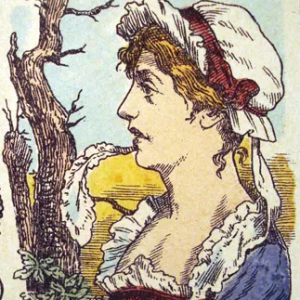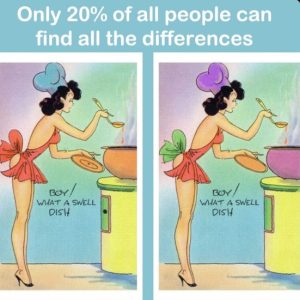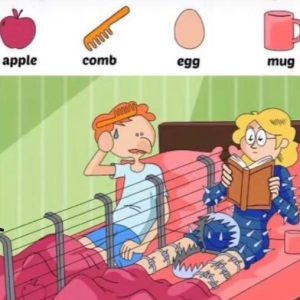Okay, riddle me this: Three chickens equal 60. One chicken plus two nests equals 26. One nest plus two banana bunches equals 15. So, what’s the value of chicken + nest × bananas?
Sounds easy, right? You might be tempted to toss in a few quick numbers and shout out an answer like 38 or 46. But slow down—this isn’t your average math problem. This visual equation hides a twist, and if you blink, you’ll miss the critical details.
So grab a pencil (or don’t—it’s more fun in your head), and let’s dive into the breakdown that’s been stumping even seasoned puzzle pros.
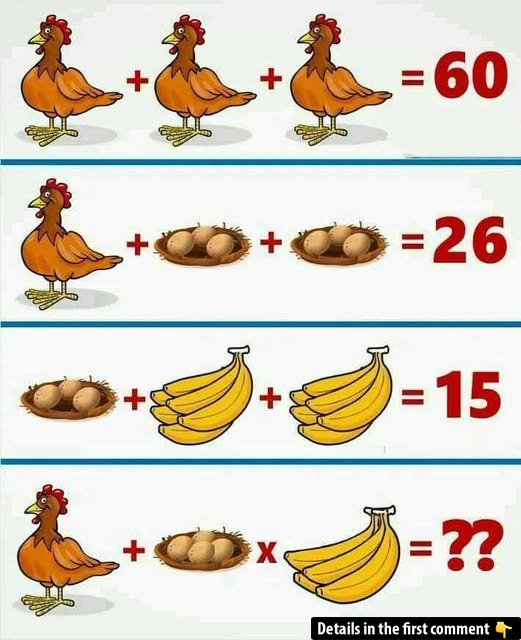
Why This Puzzle Isn’t as Simple as It Looks
You’ve probably seen puzzles like this floating around online before. They look innocent enough: some pictures, a few numbers, and a final equation waiting for your solution. But here’s the catch—it’s not just about doing the math. It’s about noticing what most people overlook.
This specific puzzle throws a curveball by subtly changing what’s shown in the images. It’s a test of observation, logic, and attention to detail—not just multiplication and addition.
Video: Feeling sluggish? Perk up with these cheerful brain challenges!
Let’s Break It Down Line by Line
Let’s go step-by-step and decode what’s really going on in this image-based riddle.
Three Chickens = 60
This part is straightforward. If three chickens equal 60, then:
Each chicken is worth 20
(60 ÷ 3 = 20)
Great! So far, so good.
One Chicken + Two Nests = 26
Now let’s plug in the chicken value:
20 + 2 nests = 26
That means 2 nests = 6 → so each nest = 3
But wait—are we still talking about the same image as before? Look closer at the nest image in the final equation. Something’s changed…
In the earlier part of the puzzle, the nest showed 3 eggs, but later it clearly shows 4 eggs. So now, the value of the nest increases based on egg count.
If 1 egg = 1 point, and there are now 4 eggs in the nest, then:
New nest value = 4
That tiny visual change flips the whole equation. Sneaky, right?
One Nest + Two Banana Bunches = 15
Let’s revisit the nest. In this part, it still has 4 eggs, so we’ll use the nest value as 4.
4 + 2 banana bunches = 15
2 banana bunches = 11
Each banana bunch = 5.5
But again—look closer at the final banana image. How many bananas are in that bunch? That’s right—five bananas, not six, not three.
So this tells us that each individual banana = 1 point, and there are five bananas in a bunch, meaning:
Banana bunch value = 5
Now you’re seeing the pattern. The values aren’t based on the object itself—they’re based on how many components are shown in that specific image.

Final Equation: Chicken + Nest × Bananas
Here comes the trickiest part—not just plugging in the numbers, but also remembering order of operations (PEMDAS: Parentheses, Exponents, Multiplication/Division, Addition/Subtraction).
If we just go left to right, we’ll mess it up.
Let’s plug in the known values:
Chicken = 20
Nest = 4 (because this time it shows 4 eggs)
Banana bunch = 5
So the equation is:
20 + 4 × 5
Apply order of operations:
First, multiply: 4 × 5 = 20
Then add: 20 + 20 = 40
Answer: 40
Not 46, not 26, not 38. It’s 40. And most people don’t get it right the first time because they either:
Miss the changing visual details
Ignore multiplication before addition
Rely on memory instead of observing the current image
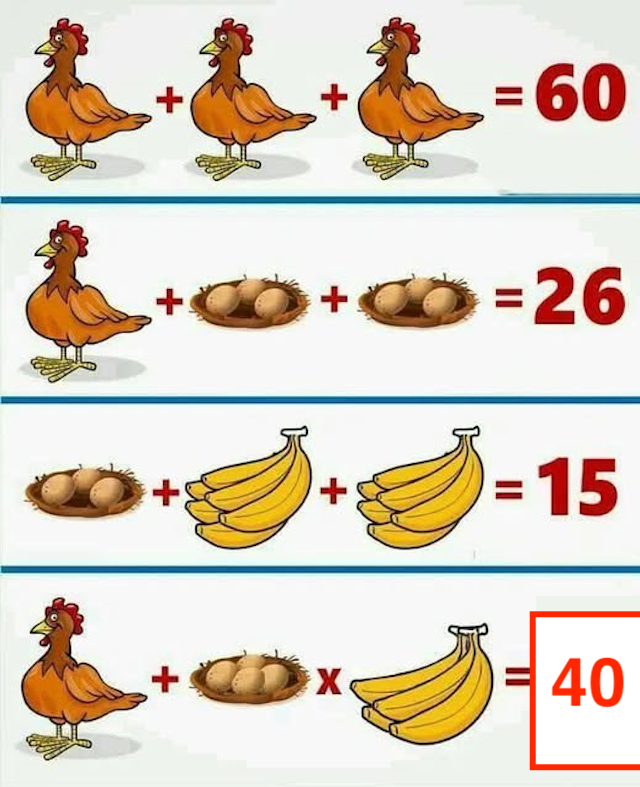
Why This Puzzle Is So Much More Than Just Math
This kind of brain teaser isn’t just about solving for X. It’s about training your brain to pay attention to the things that change. A nest with 3 eggs isn’t the same as one with 4. A banana bunch with 6 bananas doesn’t match a bunch with 5. The details matter.
It’s a perfect test for:
Attention to detail
Logical reasoning
Pattern recognition
Visual memory
In fact, this is the same kind of focus required in fields like coding, forensics, and scientific observation. One tiny difference in data can lead to a completely different result.
Don’t Feel Bad If You Got It Wrong at First
You’re not alone. The vast majority of people jump to conclusions. They race through the puzzle and treat it like a regular math problem. But the real win comes when you slow down, double-check the visuals, and apply logic precisely.
It’s like trying to find a single typo in a sea of perfect letters. At first, everything blends in. But once you really start looking, the pieces click together—and that’s when the magic happens.
Conclusion: A Small Equation That Makes a Big Statement
Video: Hard Riddles That Will Put Your IQ to the Test
The riddle may look simple, but it’s doing a lot more than throwing numbers at you. It’s making you question your assumptions, observe the details, and apply logic with precision.
So if you figured out that the correct answer is 40, give yourself a well-deserved pat on the back. And if you didn’t? Don’t worry—this puzzle wasn’t about being fast. It was about seeing what others miss.
Now go ahead—share it with a friend, watch them get stumped, and see who catches the hidden clues first. That’s half the fun anyway.
